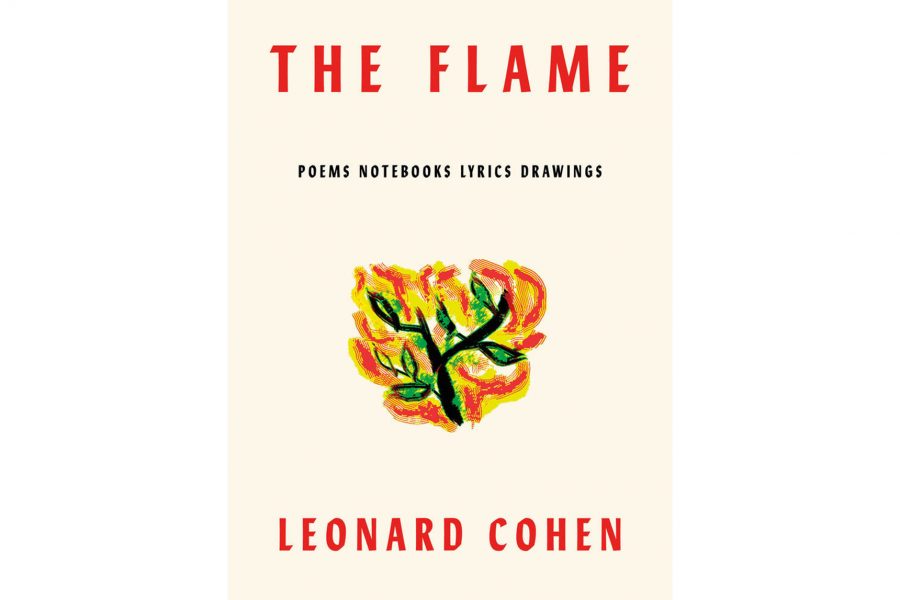You, like many of today’s youth, probably know the song “Hallelujah” from “Shrek” as performed by John Cale. What you might not know is the song was originally released in 1984 by Leonard Cohen.
Cohen, who died in 2016, was a prolific writer, musician and artist during his life. He amassed a sizable collection of sketches and notebooks that were previously unseen. “The Flame,” Cohen’s collection of posthumously published poems, lyrics and drawings makes the last years of the musical great’s artistic efforts available to the public in a beautiful and melancholy form.
“The Flame” is arranged in a way that keeps the reader engaged throughout the 288-page collection. With Cohen’s drawings appearing every few pages, the eight sections of poetry and lyrics flow seamlessly into one another. Some other poetry collections feel overwhelming with page upon page of text blocks that seem arranged without regard to topic. This isn’t the case with “The Flame.” The drawings, which are matched with poems of similar subject matters, serve as punctuation marks between the topics of the writing. Its arrangement allows the reader a sort of palate cleanser before moving onto the next selection, like a slice of ginger between courses.
The drawings also serve as a bit of comic relief, breaking up the often melancholy poems into manageable doses of the heavier stuff in life. The majority of Cohen’s drawings are simple sketches of himself in pen, with the occasional female figure and charcoal drawing. Usually featuring handwritten notes, the drawings are intimate looks into Cohen’s humor. Standout sketches include two of Cohen’s self-portraits, one hastily done with the caption “failed portrait,” another charcoal outline captioned “looking for a good time, sailor?” The drawings are simple expressions of the little thoughts that passed through the mind each day, making them not only entertaining but relatable.
Outside the section cataloged as lyrics, Cohen’s background as a songwriteris apparent. “The Flame’s” poems use simple language to express complex ideas. Many poems also feature a song-like rhyme scheme and layout, rhyming every other line and with stanzas repeated as the chorus of a song. Yet, it’s also apparent that Cohen was writing beyond the confines of a songwriter. In poems such as “On Rare Occasions,” which does not include any rhyming, Cohen shows his ability as a free verse poet. The frequent modern references within this collection make for an interesting read. Poetry as experienced by students is so often not written by late and great poets such as Cohen, but very late and great poets such as Edgar Allan Poe or Walt Whitman. Without saying anything against Poe, Whitman or other classic poets, reading “The Flame” with references to traffic and Kanye West is refreshing. It reminds readers that poetry isn’t a creature that went extinct in the 19th century — it exists in the here and now. “Kanye West is not Picasso” is an excellent example. Cohen writes, “I am the Kanye West Kanye West thinks he is,” something that locks the poem into this cultural moment.
The Flame is a collection that caps Cohen’s career beautifully. The book is available in hardcover print from major booksellers for $25.20, through Amazon for $18.30 and in a Kindle edition for $14.99.















